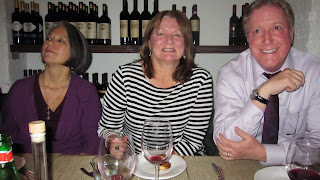So we finish up the year with two mildly good stories. Unemployment continues to slowly tick down and the genomic world continues to speed ahead albeit with some slight hiccups. According to the US Department of Labor Statistics, we started out in January, 2012 with a 8.3% unemployment rate and will finish the year somewhere around 7.8%. That does not seem like a big difference but considering in Oct of 2009 we were at 10%, it seems a little more significant. My personal outlook is the job market in our life science and diagnostics industry is better than the national average. New companies that offer real value are still getting venture backing like Oxford Nanopore or Foundation Medicine. Today's bioscience worker needs to continually work hard to watch market trends but also try to get a view of those emerging companies, under the radar screen and be more diligent keeping up with the scientific literature and news to anticipate which new publication/discovery will become next year's company.
It was a good year for genomics too with one or two hiccups. Helicos Biosciences, once considered a high flyer in the Next Gen sequencing market filed Chapter 11 Bankruptcy Protection in November. Complete Genomics stumbleda bit, had a layoff and announced they would be acquired by BGI. On the positive side, Next gen sequencing technology companies continues to drive costs down and throughput up. Science Magazine included results of the ENCODE project which generated 15 terabytes of data over the past five years to uncover the functions of human DNA sequences one of the most important science stories of 2012 - right up there with the Higs boson From a commercial perspective, the big companies continue to move more solidly into this space as evidenced by Quintiles acquisition of Expression Analysis. Roche, clearly seeing the future of genomics in the clinic made a bid for Illumina but lost that battle- for now. And finally, the bioinformatics space, fueled by genomics is growing leaps in bounds with lots of opportunities and new companies popping up. So all and all, 2012 was a good year with lots of prospects for making 2013 look even better.
It was a good year for genomics too with one or two hiccups. Helicos Biosciences, once considered a high flyer in the Next Gen sequencing market filed Chapter 11 Bankruptcy Protection in November. Complete Genomics stumbleda bit, had a layoff and announced they would be acquired by BGI. On the positive side, Next gen sequencing technology companies continues to drive costs down and throughput up. Science Magazine included results of the ENCODE project which generated 15 terabytes of data over the past five years to uncover the functions of human DNA sequences one of the most important science stories of 2012 - right up there with the Higs boson From a commercial perspective, the big companies continue to move more solidly into this space as evidenced by Quintiles acquisition of Expression Analysis. Roche, clearly seeing the future of genomics in the clinic made a bid for Illumina but lost that battle- for now. And finally, the bioinformatics space, fueled by genomics is growing leaps in bounds with lots of opportunities and new companies popping up. So all and all, 2012 was a good year with lots of prospects for making 2013 look even better.















